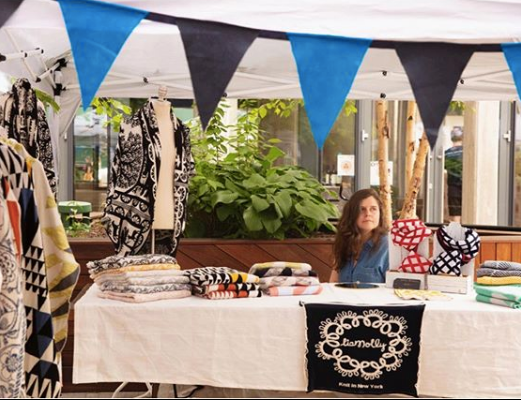
Lee Cutrone Profiles LiaMolly
Share

Knitting is a multigenerational art in designer Seema Sudan’s family. Seema learned to knit as a child, and today, Seema, her husband Sidney Bertheaud, their daughter Molly and son Liam are continuing the tradition in a modern, high-tech manner. Together, they run Liamolly, a knitwear line that is as sustainable as it is chic – perfect for the select edit of goods at Sotre. “The feel of yarns, the recipes that can be created by adding textures and colors together, creating jacquard patterns, and the engineering that can happen in knitted shapes have been a lifelong passion,” says Seema.

Years of experience have gone into the making of the brand, which is named for Seema and Sidney’s children, Liam and Molly. Seema studied at Parsons School of Design and worked as a designer for various companies, including Anthroplogie, before starting her own line of sweaters made overseas. Eventually, she invested in her own computerized knitting machine and brought the operation home to New Orleans, a move that made important differences in terms of sustainability.


Seema and Sidney (who was raised in Louisiana) relocated from Philadelphia to New Orleans as part of the city’s rebirth after Hurricane Katrina. As a small, family enterprise, the business was able to eliminate the footprint associated with manufacturing in Asia and the need for long lead times. It also shifted its focus from sweaters to soft, cotton wraps that are designed to last, unlike much of today’s throw-away fashion. Made with long-staple, Italian cotton, they resist pilling, have classic motifs and multi-task as wraps, scarfs, blankets and ponchos that work in every climate.
In 2013, Liamolly moved to the Catskill Mountains of Upstate New York, where their production studio shares a building with a small rural post office and is just steps away from Seema and Sidney’s home. While the unanticipated economic fallout from Covid-19 has resulted in huge amounts of fashion-industry waste, Liamolly is among the brands already practicing a sustainable model. It sells mostly to small boutiques and is made-to-order, so there is no overstock. “The only stock we keep is of our yarn cones,” says Seema. “We can truly collaborate and pivot quickly to the ever-changing world we live in these days.” Business picked up from frequent trunk shows has been temporarily suspended, but they have added masks to the line and have garnered a larger following on Instagram. “We’ve seen our geographic locations blooming from social media,” says Molly.

The new line of wraps for fall features geometric patterns inspired by tilework. In response to the stay-at-home trend, comfortable sweaters and wrap dresses soon may be added as well. Yet an expanded line, won’t translate to a larger impact on the environment. “It’s really exciting to see the larger fashion world embracing sustainability,” says Molly. “I’m hoping we’re able to remain a successful venture in fashion while still keeping to our ideals.” After all, the terms cottage industry and small footprint couldn’t be more fitting. “My parents’ house is about ten feet from the door of the studio,” says Molly of the studio where each piece is machine-knit and then finished by hand. “It’s literally a small footprint.”
Lee Cutrone for Sotre
